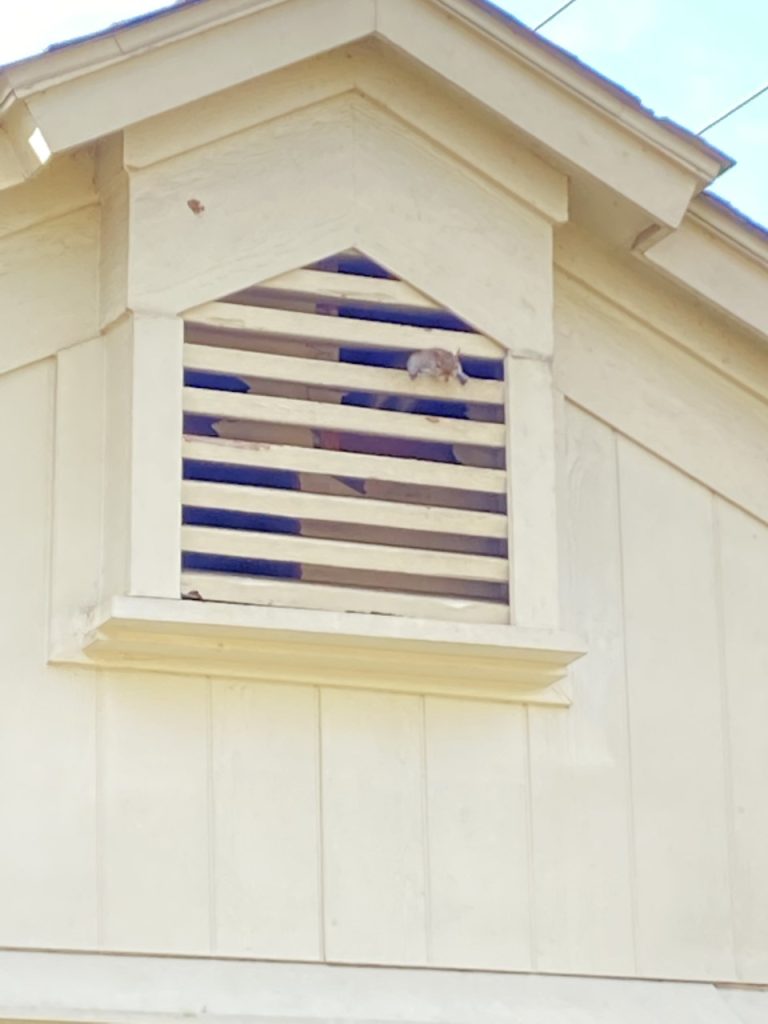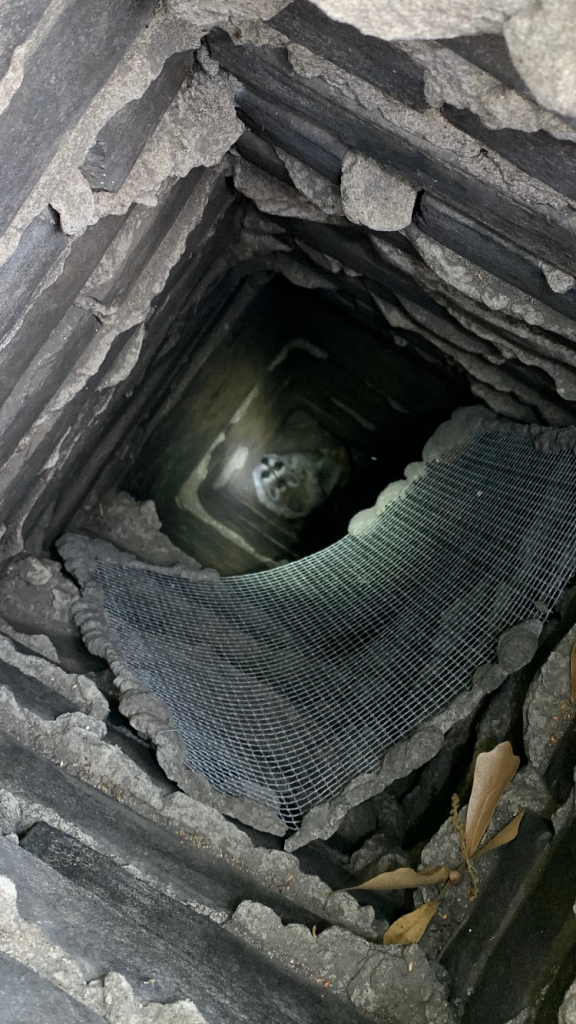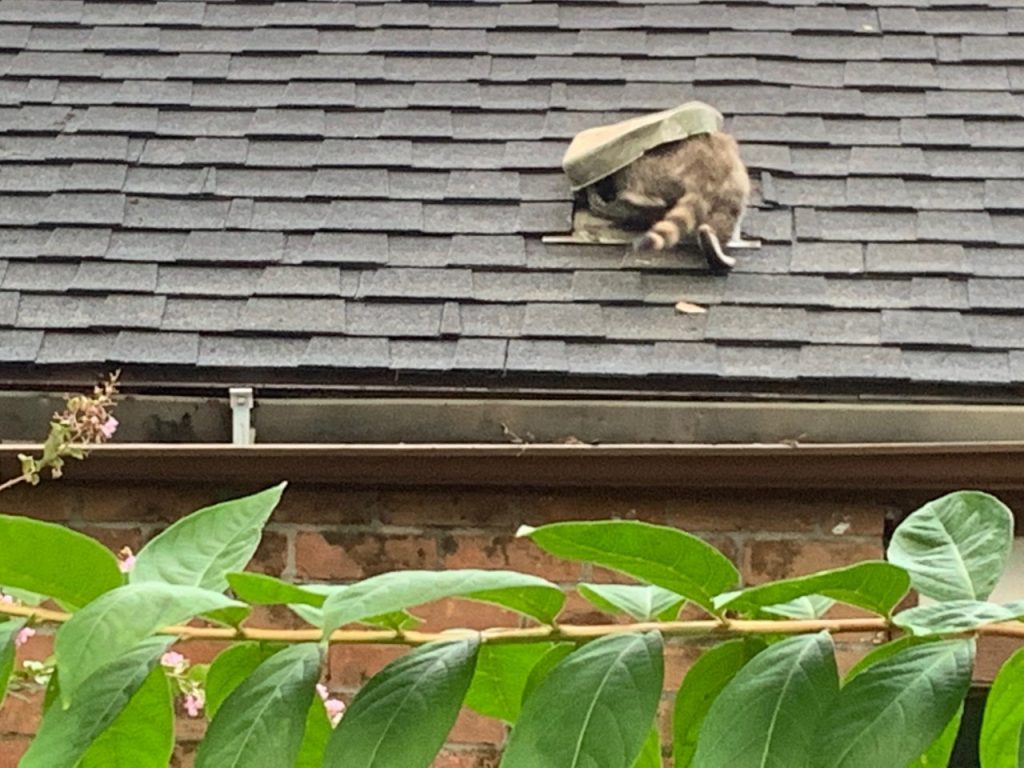
- Mice and bats only need a hole the size of a pencil.
- Squirrels can squeeze into a hole the size of a baseball.
- Raccoons can fit into a grapefruit size hole.
Rodents like squirrels, rats, and mice constantly gnaw and chew to manage their perpetually growing incisors.
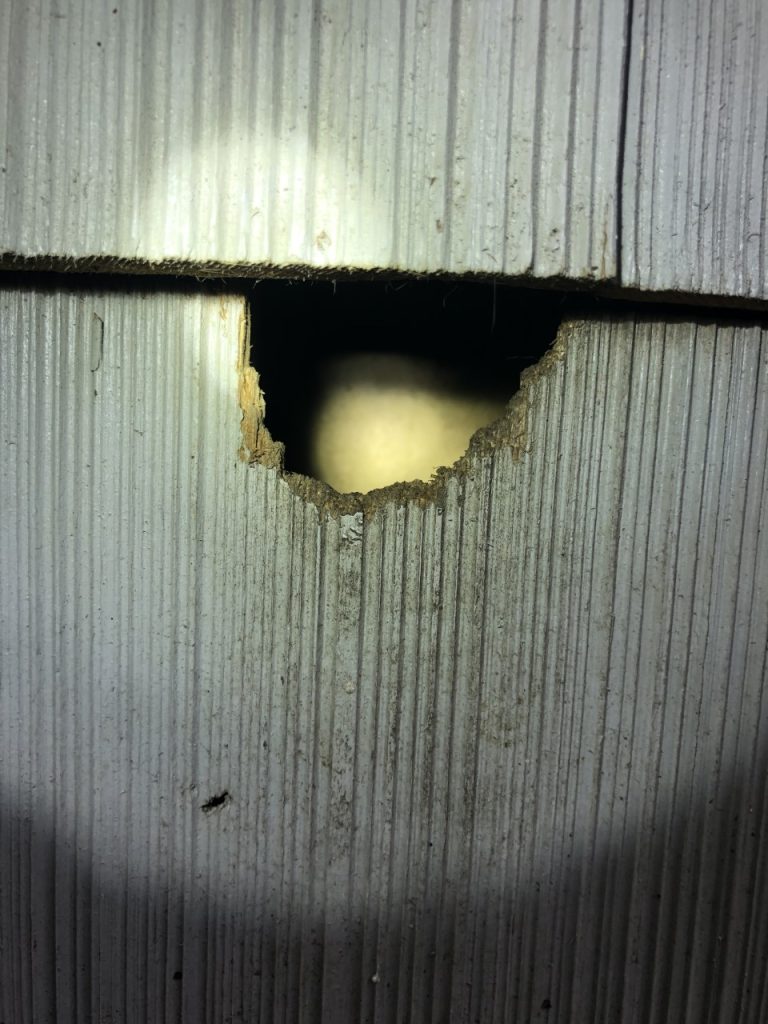
Cedar shingles and natural materials stand no chance against rodent teeth.
Raccoons are strong and dexterous and can create their own way into your home. Here a raccoon created a sizable entry point in the soffit of this Houston home.
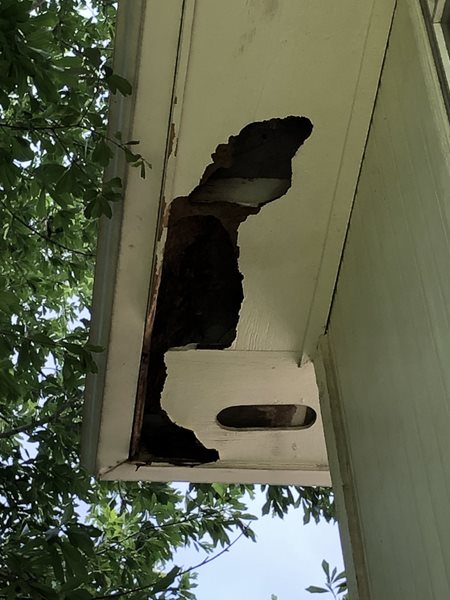
Professional Animal Damage Repairs vs DIY Repairs
Keeping an animal out requires more than some plywood. There are different materials designed to keep specific species out. Rodents can easily chew through materials such as wood, vinyl, plastic, asphalt shingles, and even soft metals like aluminum.
A homeowner noticed a hole in their soffit and had it patched, but nobody checked if there was an animal present. This squirrel was sealed inside the attic but found a way out.
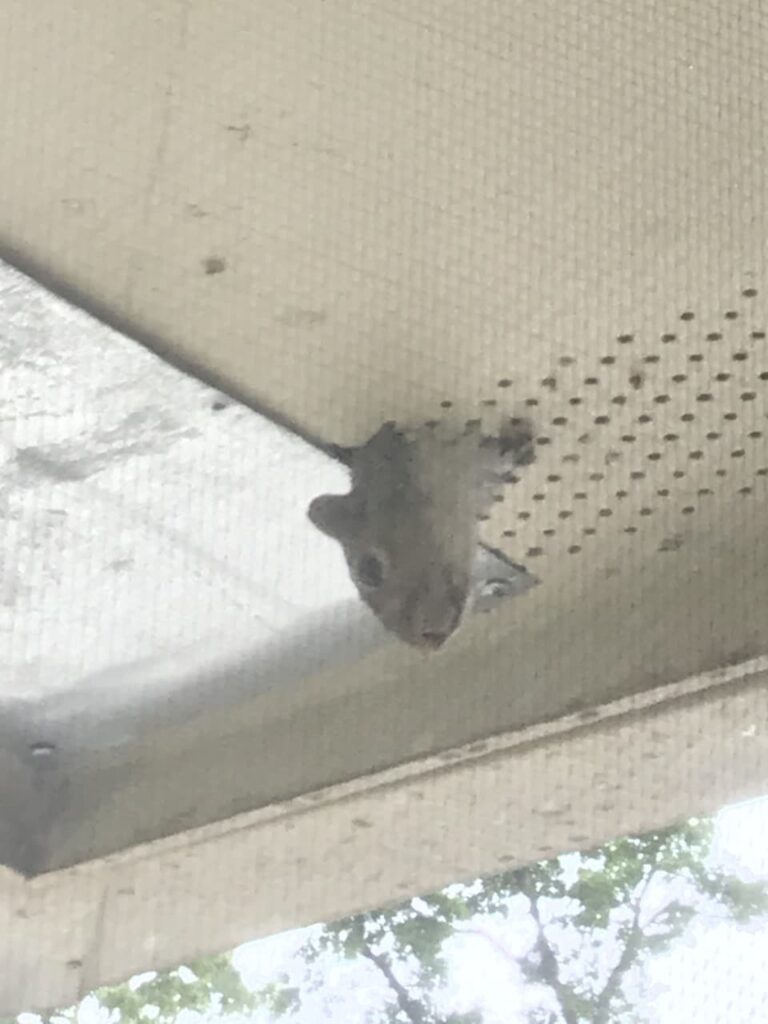
This is why you can’t use spray foam for animals and insects. They can penetrate spray foam within seconds. This re-entry occurred 2 days after foam was applied. The right material for the right project is critical!
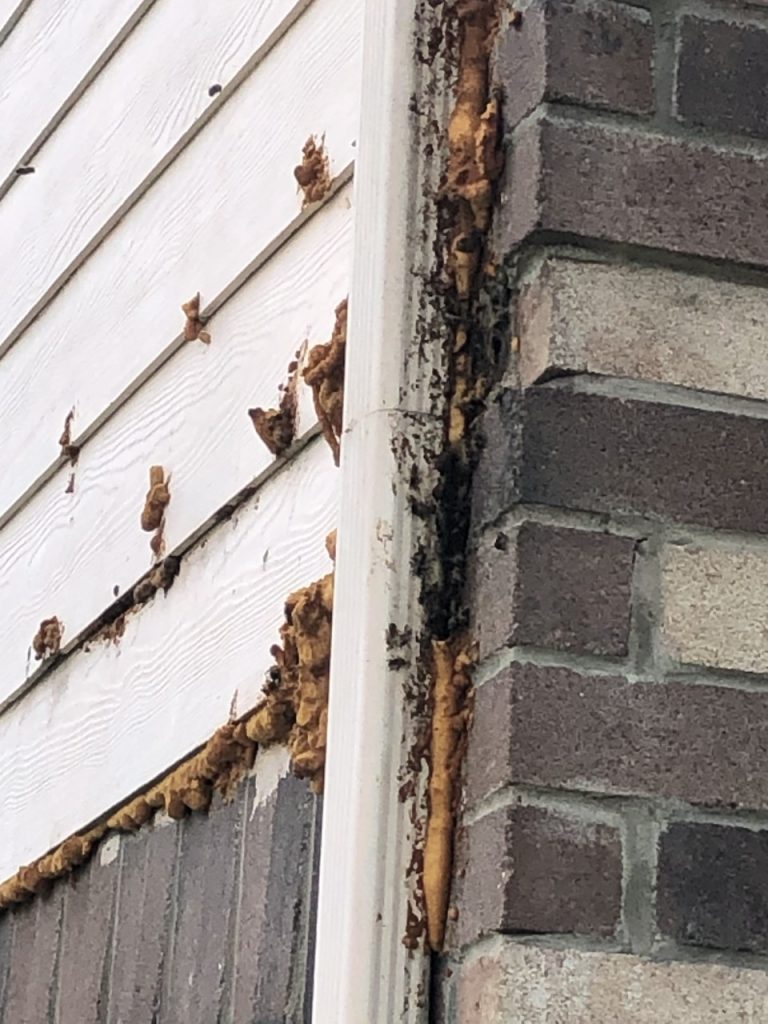
A raccoon fell down a chimney after an poorly installed chimeny grate collapsed under the raccoon’s weight.

Typical Animal Entry Points
Knowing where to look for animal entry points is half the battle. Soffitts, eaves, loose shingles, and gable vents are typical entry points for animals.
When a raccoon wants in, they can often get in through the hardiest of structural engineering and building materials. A raccoon was able to take advantage of a few loose shingles to create a large enough entry point.
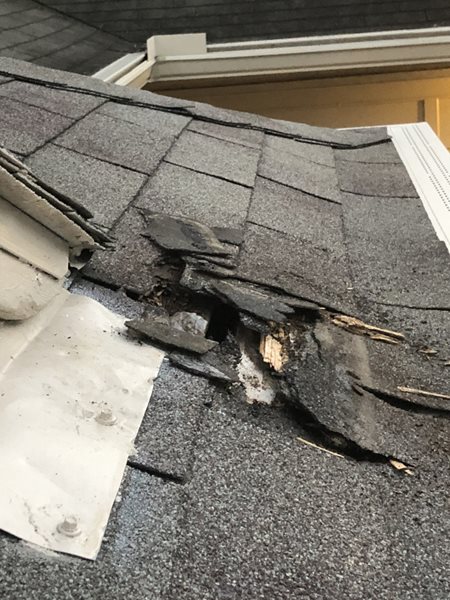
Eaves returns must be sealed. Any critter can waltz right through this gap into the attic.
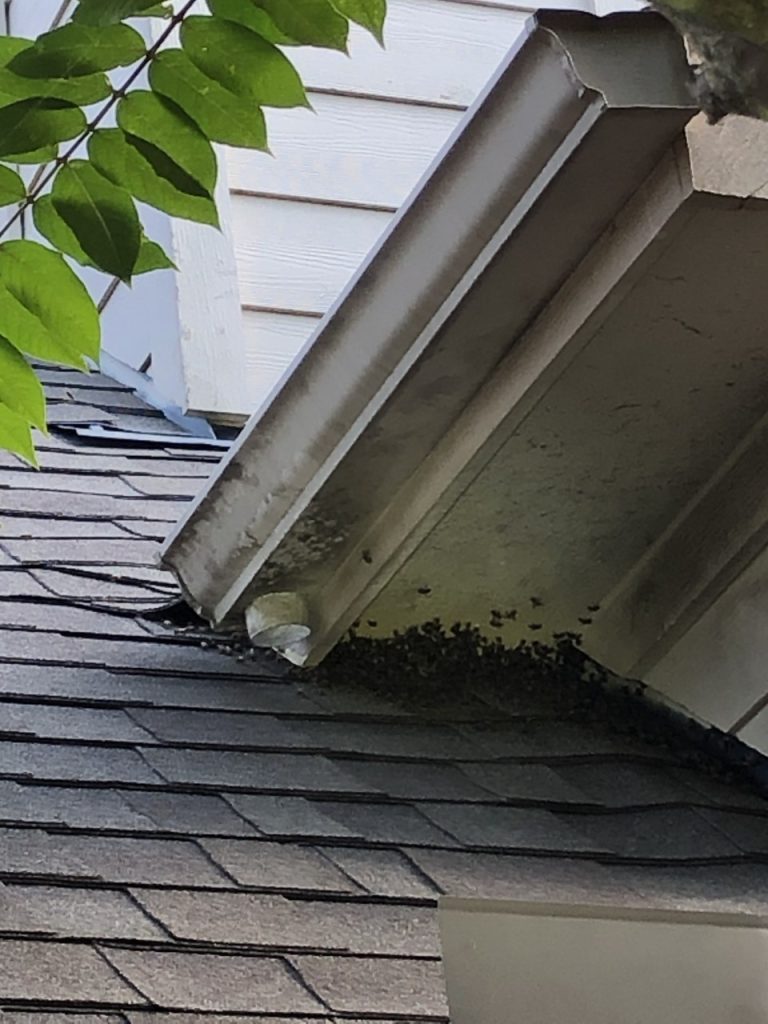
During a whole home exclusion, we will reinforce any potential entry points. This is why it’s necessary to screen all openings appropriately. Most insert screens are not installed with the purpose to keep a motivated animal out of your home.
